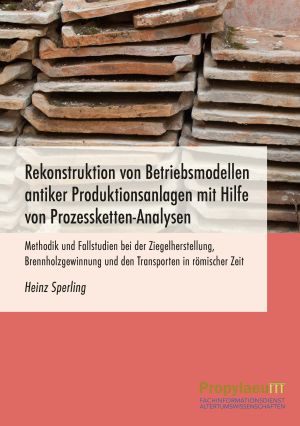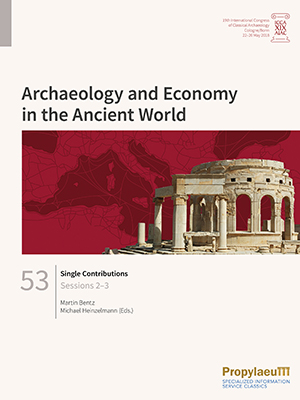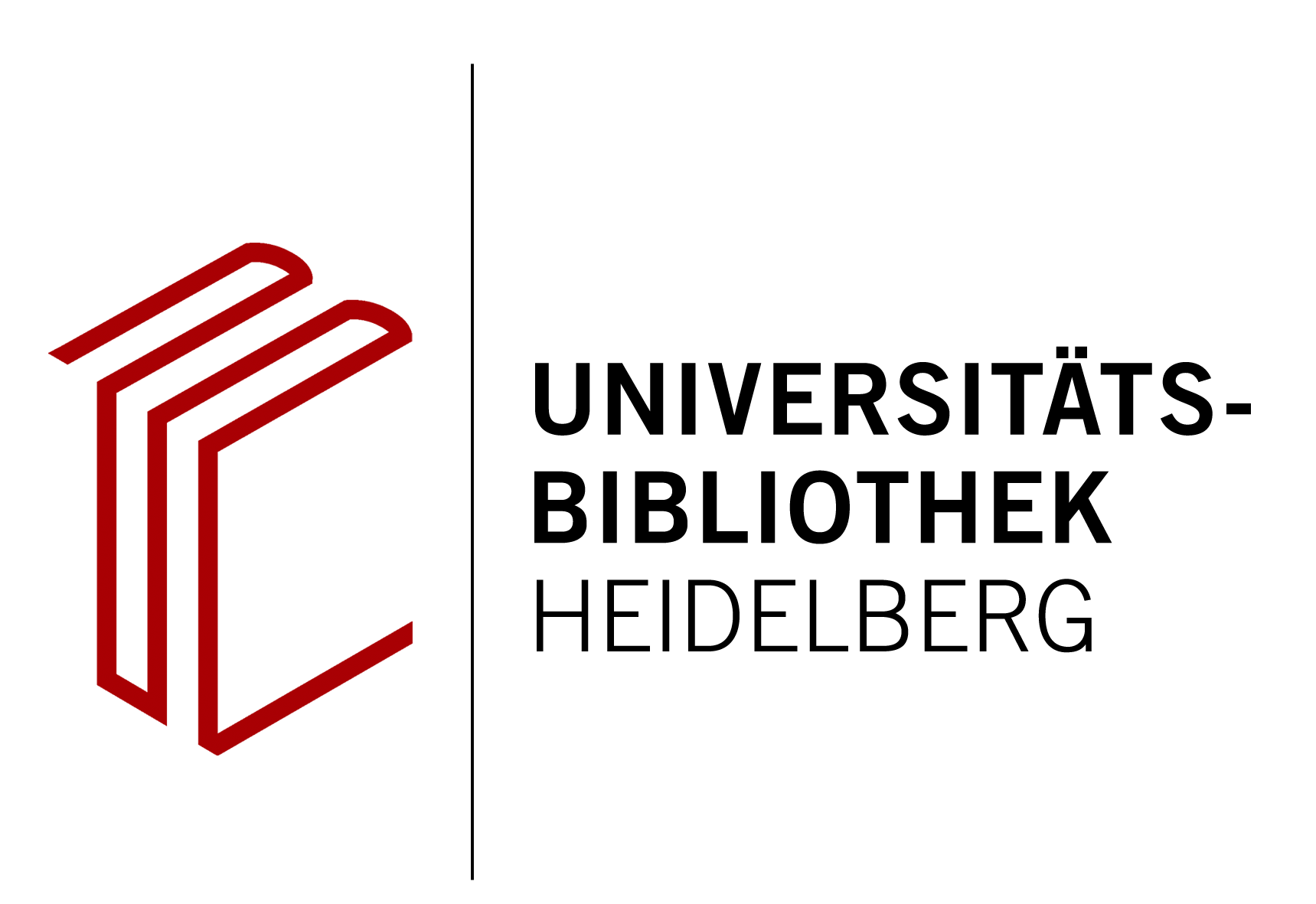Sperling, Heinz
Rekonstruktion von Betriebsmodellen antiker Produktionsanlagen mit Hilfe von Prozessketten-Analysen: Methodik und Fallstudien bei der Ziegelherstellung, Brennholzgewinnung und den Transporten in römischer Zeit
Römische Ziegeleien in den Nordwest-Provinzen: Hierfür wurden Betriebsmodelle rekonstruiert, die quantitative Aussagen zur maximalen Produktionskapazität, dem Personal- und Brennstoffbedarf und dem anfallenden Transportaufwand solcher Anlagen möglich machen. Anwendungsbeispiel ist die römische Ziegelei in Dormagen. Die erarbeiteten Algorithmen sind als Open-Source angelegt und an andere Befunde leicht anpassbar. Wegen der Vergleichbarkeit der in den römischen Nordwest-Provinzen vorgefundenen Öfen mit denen am oberen Tiber - für die Herstellung der Ziegel für Bauten in Rom - konnten so die dort dafür benötigten Ziegeleikapazitäten erstmals ermittelt werden.
Den zugehörigen Algorithmus finden Sie hier.
Sessions 2–3, Single Contributions
Wirtschaftliche Aspekte durchdringen alle Bereiche des öffentlichen und privaten Lebens in alten Gesellschaften, sei es in der Stadtentwicklung, der Religion, der Kunst, dem Wohnen oder dem Tod. Die Erforschung der antiken Wirtschaft spielt seit langem eine wichtige Rolle in der Alten Geschichte. In den letzten Jahrzehnten ist aber auch in der Archäologie zunehmend das Bewusstsein gewachsen, dass die materielle Kultur alter Gesellschaften ausgezeichnete Möglichkeiten bietet, die Struktur, Leistung und Dynamik alter Wirtschaftssysteme und Wirtschaftsprozesse zu untersuchen. Hauptziel dieses Kongresses war es daher, die Ökonomie als ein zentrales Element der klassischen Gesellschaften zu verstehen und ihre Wechselwirkung mit ökologischen, politischen, sozialen, religiösen und kulturellen Hintergründen zu analysieren. Das Thema des Kongresses richtete sich an alle Disziplinen, die sich mit der griechisch-römischen Zivilisation und ihren Nachbarkulturen von der ägäischen Bronzezeit bis zum Ende der Spätantike befassen.
In diesem Sammelband widmen sich einzelne Beiträge der Sessions 2 und 3 einerseits der Untersuchung natürlicher Umweltfaktoren – Klima und Landschaft – als Einflüsse auf die antike Wirtschaft und andererseits der Erforschung von Produktionssystem. Thematisch spannt sich der Bogen von der Kontextualisierung des antiken Handwerks, über Fragen zur Produktion von beispielsweise dekorativen Metallobjekten, Glas, Porträtstatuen und Ziegeln, bis hin zur antiken Architektur und dem damit verbundenen Bauwesen. Der zeitliche und topographische Rahmen reicht vom mykenischen und archaischen Griechenland, über das eisenzeitliche Süditalien und das hellenistisch-römische Sizilien sowie Makedonien bis zum kaiserzeitlichen Spanien und Kleinasien.








